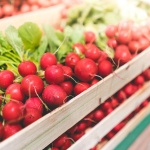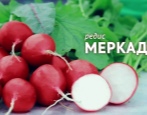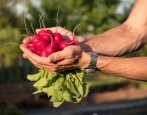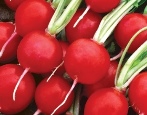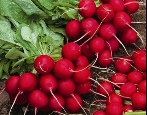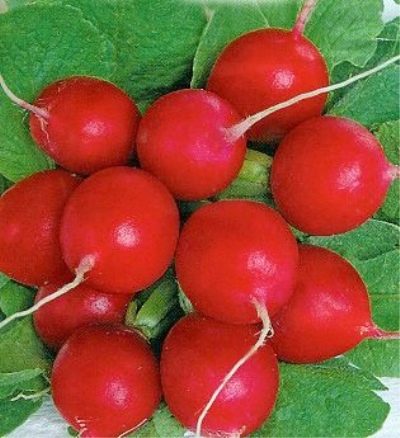
- Authors: Alekseev Yu.B.
- Year of approval: 2008
- Ripening terms: mid-early
- Leaf rosette shape: semi-upright
- Leaves: obovate, grayish green
- Petiole: with anthocyanin coloration
- The form: rounded
- Coloration: Red
- Weight, g: 25-30
- Color of the pulp: white
Mid-early varieties of radish outperform their early-ripening counterparts in several ways. They have a high yield, excellent transportability and keeping quality, and the collection is distinguished by uniformity without defects and variability. One of the best representatives of the category is the Lightning F1 hybrid.
Breeding history
Radish Lightning is the result of the work of the well-known Russian seed company Semko. The enterprise, founded in 1992, today has in its "portfolio" more than 250 selection achievements included in the State Register. The author of this hybrid was the founder and CEO of the company - Yuri Borisovich Alekseev.
Since 2008, Molniya radish has been approved for cultivation on personal subsidiary plots in all regions of the Russian Federation, from the North-West to the Far East.
Description of the variety
Lightning F1 is a fruitful, cold-resistant radish hybrid with a medium-early ripening period, with a compact rosette of medium-sized leaves, round and bright roots of good taste and without hollowness. Lightning is highly adaptable to changing climatic conditions and resistance to the manifestations of color. It is grown in open and protected ground.
Characteristics of the appearance of the plant and root crops
This radish forms a small semi-erect root rosette. The color of the leaves is grayish-green, and the petioles have a red-purple tint.
Root crops are leveled, rounded or slightly elongated in shape with a convex head and a thin short root. Average dimensions of radish: weight from 25 to 30 g and diameter 30-40 mm. Some specimens can grow larger, weighing up to 40-45 g.
The smooth skin of the root vegetable has a deep red color. The snow-white pulp does not lose its glassy, juicy and crunchy homogeneous texture: it does not become coarse fiber or flabby with voids, even in very mature radishes.
Purpose and taste of tubers
The main purpose of this culture is fresh consumption as an element of various salads or summer okroshka. Radish in the marinade acquires an interesting taste: it can be preserved whole or chopped and enjoy an unusual snack in winter.
The delicate pulp of the Zipper radish is distinguished by aroma and excellent taste: sweetish with a slight pungency, without bitterness.
Maturation
According to the characteristics declared by the originator, Lightning is a mid-early hybrid, the ripening period is on the border between early and mid-season varieties. Root crops begin to enter the stage of ripeness about 3-4 weeks (23-27 days) after germination. Lightning is characterized by amicable ripening and roots that are almost one-dimensional in shape and size.
Yield
Lightning gives a bountiful harvest with almost 100% of marketable products. The average yield on a plot of 1 m² is 3 kg. Under favorable conditions, the figure rises to 4.5 kg / 1 m².
Growing and caring
For a garden bed for this radish, choose a sunny place. Sowing is carried out in April-May, the seeds will perfectly survive possible return frosts.Rapid ripening allows the crop to be planted several times per season. Radish tolerates a drop in air and soil temperature, so it can be sown on areas freed from other crops even in August.
For sowing, a 10 x 5 cm scheme is used. The seeds of the hybrid are large, they are buried by 1.5 cm.
Lightning shows excellent growth and productivity in greenhouses and even with balcony and indoor cultivation under phytolamps.
The main care is simple, it consists in maintaining the soil in a loose and moist state and the necessary dressing. The culture is not too demanding, it should not be "overfed": radish responds well to the introduction of potassium-phosphorus additives, nitrogenous ones are practically not used.
Regular watering is very important, in hot weather it should be daily. The quality of root crops deteriorates from the alternation of periods of watering and drought.
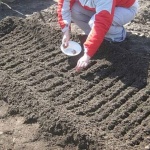

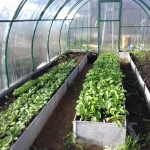
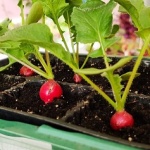
Soil requirements
Lightning grows well on loose, well-moistened soil with a neutral acidity level. Light loam or sandy loam is best suited. A high level of nitrogen is undesirable: radish actively absorbs it, increasing lush tops, to the detriment of the growth of root crops.
You should not sow radishes in the garden after cabbage, radish, rutabaga or horseradish. Neighborhood with crops such as rhubarb, cabbage, daikon, turnip is undesirable. Good neighbors are beans, peas, nasturtium, lettuce, onions, and garlic.
Disease and pest resistance
Lightning has good immunity to the main diseases of the culture: fomoza, white and gray rot, powdery mildew fungus. With proper agricultural technology, lightning radish rarely gets sick.
Early maturity allows this hybrid to avoid severe damage from numerous pests. It is important to carry out a preventive inspection of the beds. In the first phases of infection, natural remedies will help: spraying with solutions of odorous plants, pollination with ash or tobacco dust.

